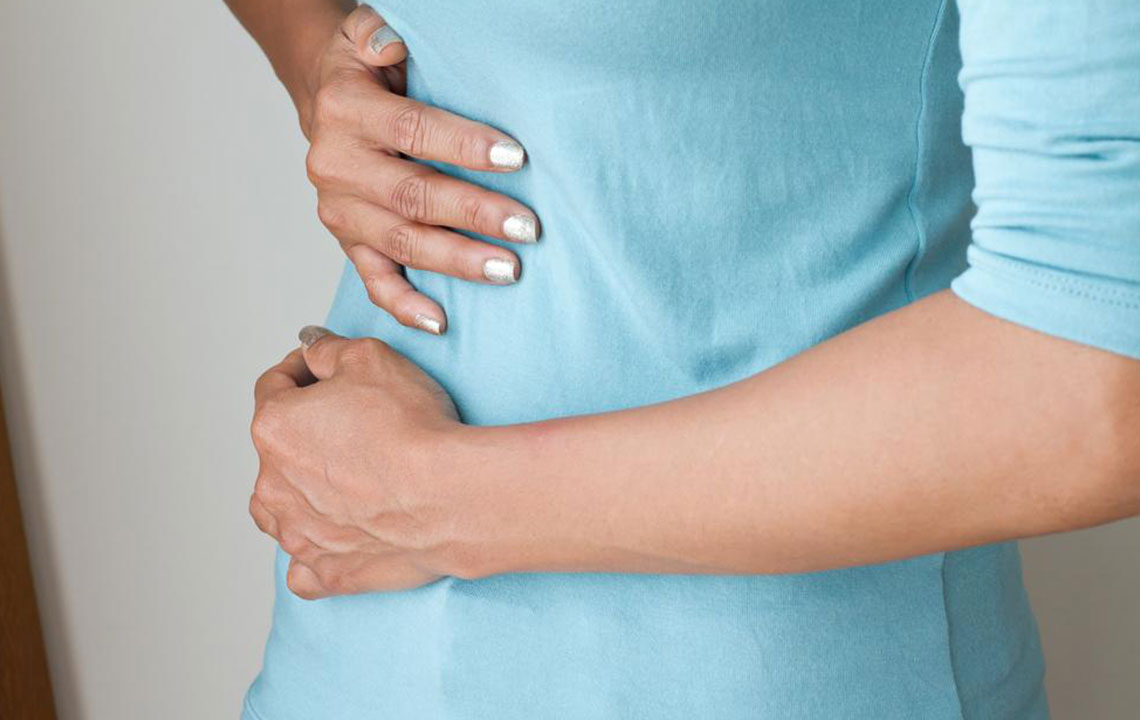Tips to Get a Relief from Gas and Bloating

Belching, burping, passing gas in odd social situations may be embarrassing. Although it may seem funny to others, it is a severe problem for someone who is suffering from gas and related feeling of bloating. Intestinal gas and the feeling of bloating are unpleasant and a common cause of physical discomfort.
There is nothing abnormal in having a certain amount of intestinal gas; it becomes a problem when it goes beyond the occasional gas to a persistent problem!
The good news is, there are several steps which can be taken to combat these adverse digestive symptoms.
Gas in the intestine may build up due to various reasons. The most common cause of gas in the intestine are gas that forms as an outcome of digestion of some foods and swallowed air. In most cases burps push out a maximum of the swallowed air, and the remaining is either absorbed by the body or is released through the rectum. Most of the gas is produced as a result of the breakdown of food by the intestinal bacteria, and the wrong kinds of food can play havoc.
Here are some gas and bloating relief tips meant to keep the ‘gas level’ low.
Avoid swallowing air
It is not possible not to swallow air at all, but it can be minimized by following few simple steps. People who eat at a fast pace tend to gulp down more air, so cut down on the speed of eating, eat slowly! Steer clear of chewing gum and hard candies because as you chew on them, you tend to swallow more air. Quit smoking because that’s when you gulp down plenty of air.
Watch what’s on your plate
Avoid foods that cause gas! These are foods that break down in the intestine to produce plenty of gas. The common list of such foods include
- Dairy products : Many people have lactose intolerance and have difficulty in digesting milk products. If milk and dairy products are the culprits, try having soy milk or almond milk to reduce the symptoms.
- Beans : Beans top the list when considering the list of foods that cause gas. The complex sugar called raffinose in beans is difficult to digest, and that’s the main reason for the related gas problem. The gas problem may be reduced by soaking the beans overnight before consuming it.
- Whole grains : Raffinose is also present in whole grains like wheat, oats, and others which are difficult to break down by the body. Other than that, when bacteria in the large intestine break down the fiber and starch present in grains, a considerable amount of gas is produced. Rice is one of the best grains to consume in this matter because it does not cause gas.
- Vegetables : Vegetables are healthy, but some vegetables cause more gas than others. So instead of blaming vegetables for causing gas, reduce intake of selected veggies that are behind the gas trouble! Green pepper, shallot, artichoke, carrot, peas, cabbage, Brussels sprouts, asparagus, celery, broccoli, cauliflower, cucumber, onion, radish, and corn are the main gas offenders.
- Fruits : Fruits top the healthy food list, but some of them may be the cause of intestinal gas. Apples, plum, blackberry, raspberry, apricots, pear, peaches, prunes, and nectarines contain a natural sugar-alcohol called sorbitol which is difficult for the body to digest. Consuming these often cause gas. Fruits like papaya may cause gas if you overeat due to their fiber content. However, eating a small amount of papaya may help clear up certain gas due to an enzyme present in it which is required for protein breakdown in the digestive tract. Instead of the gas-causing fruits try to include lychee, cherry, avocado, banana, orange, strawberries, grapefruit, kiwifruit and honeydew melon which have little or no sorbitol. This would give you gas and bloating relief.
- Carbonated drinks : Sodas and similar carbonated drinks significantly add to the gas problem. You intend to swallow more air when you consume these and the gas somehow wants to come out from the digestive tract. This results in burping and flatulence. Drinking tea, juice or plain water is one of the popular gas and bloating relief tips.
- Processed foods and sweeteners : Most packaged food like snacks, bread, cereal, salad dressings and their likes contain an assortment of ingredients like fructose and lactose which may result in amplifying the gas trouble. Sugar-free or diabetic food may contain sorbitol, which is again is a culprit for causing intestinal gas.
What else helps?
One of the popular gas and bloating relief tips is having probiotics. Probiotics are often called “friendly or helpful bacteria” and are good for health, especially the digestive system. Probiotics are live microorganisms found in fermented foods as well as supplements. These help in keeping the gut healthy. Probiotics are well known for their ability to help reduce extreme gut fermentation and in the bargain effectively reduce intestinal gas.
Gas formation is a part of life and so is burping and farting but to avoid making it a severe problem, it’s better to watch your diet and follow the gas and bloating relief tips mentioned above!


